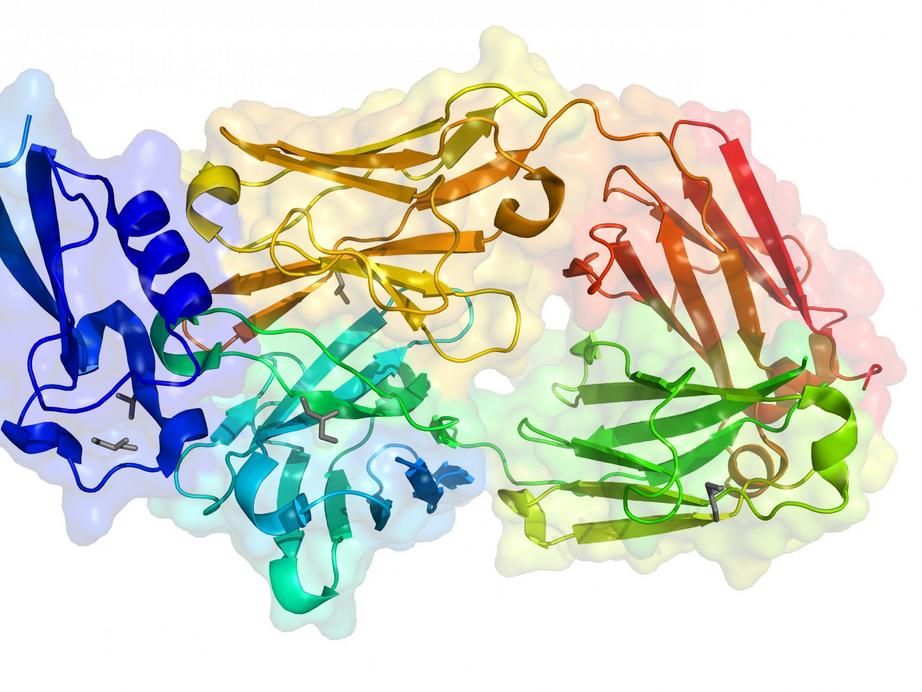Solving the mysteries of life: crystallographers identify 1,000 protein structures
The Canadian Light Source is celebrating two milestones reached by scientists who have conducted research at the national facility at the University of Saskatchewan.
Scientists have solved 1,000 protein structures using data collected at CLS's CMCF beamlines. These have been added to the Protein Data Bank – a collection of structures solved by researchers globally. Researchers have also published 500 scientific papers based on their work using the crystallography beamlines.
Proteins are the building blocks of life and are described as the body's workhorses. The body is made of trillions of cells. Cells produce proteins, which do the work of breaking down food, sending messages to other cells, and fighting bacteria, viruses and parasites. The discoveries at the CLS range from how the malaria parasite invades red blood cells to why superbugs are resistant to certain antibiotics and how parkin protein mutations result in some types of Parkinson's disease. Understanding how these and other such proteins work can potentially save millions of lives.
"Each of these protein structures that have been solved at the CLS represents a significant contribution to the global body of knowledge in the areas of biology and biochemistry, advancing health research," says CEO Rob Lamb.
"We are proud of these milestones, and the hard work and dedication that went into achieving them. Scientists come from all over Canada and around the world to use our state-of-the-art facility supported by fantastic staff scientists."
Using powerful synchrotron X-ray light, scientists explore human, animal, plant, bacterial, viral and parasitic proteins as well as nucleic acids. After exposing a protein crystal to synchrotron light, the scientists are able to use the information to produce a 3-D model that shows the positions of the atoms. This structural information provides details about how proteins function and interact. Scientists then use this information to better understand biology, environmental processes, as well as human health and disease. Often, they use the information to develop new pharmaceuticals.
"These beamlines are a huge boost to the Canadian structural biological community," says Miroslaw Cygler, University of Saskatchewan professor of biochemistry and Canada Research Chair in Molecular Medicine Using Synchrotron Light. He is also the leader of the CMCF beamline advisory team.
"Every protein crystallography lab in Canada from coast to coast to coast uses this facility to do experiments. Canada is a big country. Travelling is very expensive. From the very beginning, one of the missions of the facility was to provide remote service. This is really crucial in both impact and importance to Canadians," says Cygler.
Jean-Philippe Julien couldn't agree more. Julien is the Canada Research Chair in Structural Immunology and a scientist in Molecular Medicine at The Hospital for Sick Children Research Institute, as well as an assistant professor in the departments of biochemistry and immunology at the University of Toronto.
In the past two years, he has solved 20 protein structures using remote data collection. He sends crystal samples to Saskatoon where CLS scientists assist by mounting the samples on the beamline and then Julien's team operates the equipment from their lab in Toronto. Structure 6B0S (crystal structure of circumsporozoite protein aTSR domain in complex with 1710 antibody) is the one-thousandth protein structure solved at the CLS and is part of Julien's research into developing a vaccine that prevents the malaria parasite from causing infections.
The World Health Organization reports that nearly half of the world's population is at risk of contracting malaria, with hundreds of thousands of children dying every year.
In collaboration with scientists in Germany, Julien's team examined B cells – a type of white blood cell – from volunteers who received a candidate malaria vaccine and were then exposed to the malaria parasite to evaluate protection in a clinical trial. By solving the protein structure of an antibody developed by one of the European volunteers in this study, Julien has learned more about how the vaccine interacted with their immune system. This provides scientists with further clues as to how to alter the vaccine to improve immunity to malaria.
"In characterizing human antibody responses to malaria antigens, it is critical to have access to a world-class synchrotron beamline within Canada," says Julien.
"Recent upgrades to CMCF have tremendously increased the sensitivity and throughput of data collection, enabling us to solve more antigen-antibody structures informing our quest towards the design of improved malaria vaccine candidates."
Julien's research describing this latest protein structure was published this week in The Journal of Experimental Medicine.
More than 70 academic, government and industrial research groups from across Canada and the United States conduct research using the CMCF beamlines.
The number of depositions has been increasing every year and with upcoming upgrades on the beamlines, the volume of work is expected to continue to accelerate.
The 500th paper was the result of research by Cygler's laboratory at the U of S. Using crystallography as well as other techniques, the researchers have a better understanding of how iron-sulfur clusters are synthesized in the body. These clusters are key components of many proteins critical to life and defects in the formation of the clusters can cause severe neurological and metabolic diseases, often with fatal outcomes. The findings were published in Nature Communications.
For the rest of this article please go to source link below.
For full references please use source link below.

